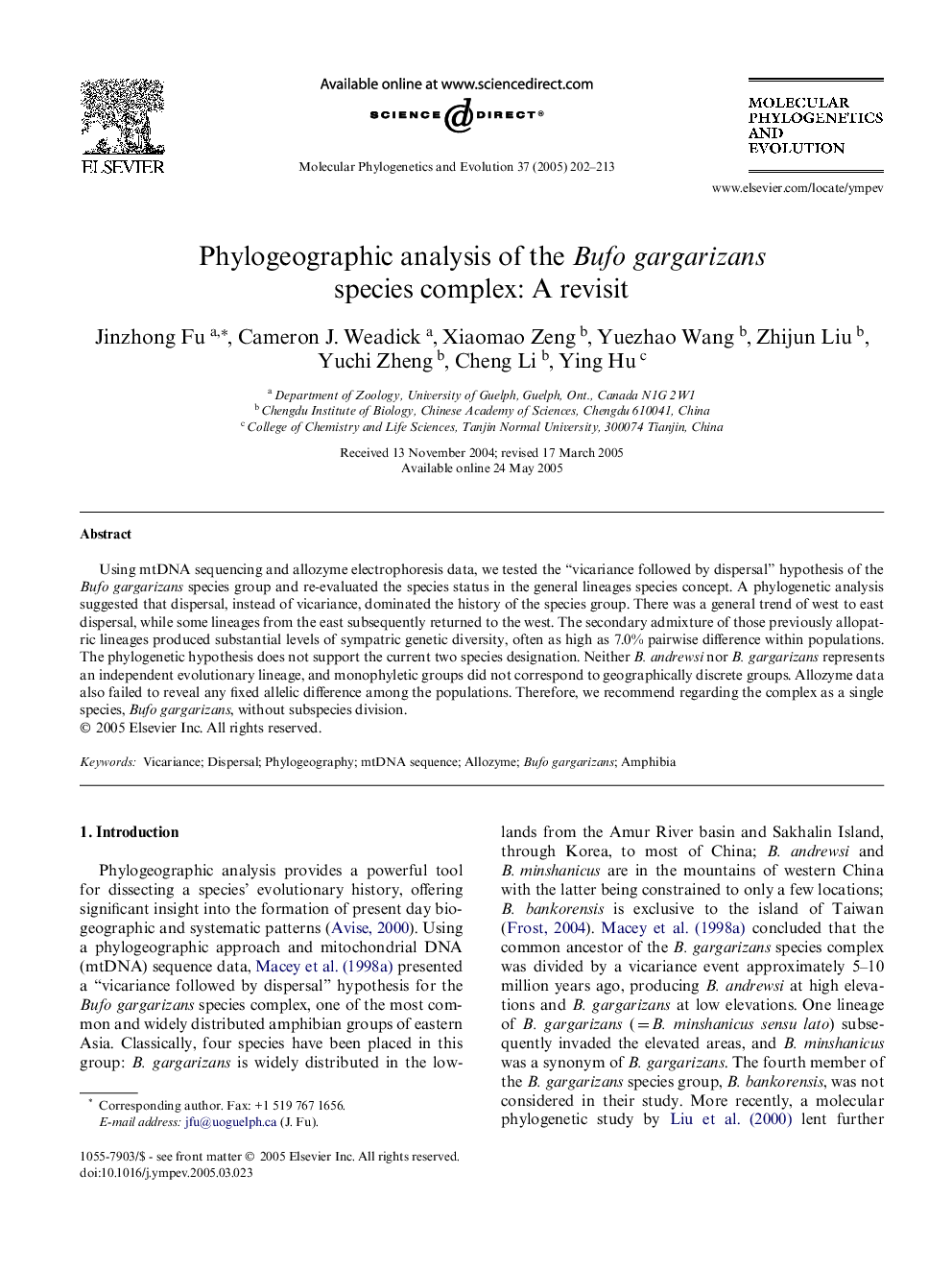| Article ID | Journal | Published Year | Pages | File Type |
|---|---|---|---|---|
| 9142915 | Molecular Phylogenetics and Evolution | 2005 | 12 Pages |
Abstract
Using mtDNA sequencing and allozyme electrophoresis data, we tested the “vicariance followed by dispersal” hypothesis of the Bufo gargarizans species group and re-evaluated the species status in the general lineages species concept. A phylogenetic analysis suggested that dispersal, instead of vicariance, dominated the history of the species group. There was a general trend of west to east dispersal, while some lineages from the east subsequently returned to the west. The secondary admixture of those previously allopatric lineages produced substantial levels of sympatric genetic diversity, often as high as 7.0% pairwise difference within populations. The phylogenetic hypothesis does not support the current two species designation. Neither B. andrewsi nor B. gargarizans represents an independent evolutionary lineage, and monophyletic groups did not correspond to geographically discrete groups. Allozyme data also failed to reveal any fixed allelic difference among the populations. Therefore, we recommend regarding the complex as a single species, Bufo gargarizans, without subspecies division.
Related Topics
Life Sciences
Agricultural and Biological Sciences
Ecology, Evolution, Behavior and Systematics
Authors
Jinzhong Fu, Cameron J. Weadick, Xiaomao Zeng, Yuezhao Wang, Zhijun Liu, Yuchi Zheng, Cheng Li, Ying Hu,
